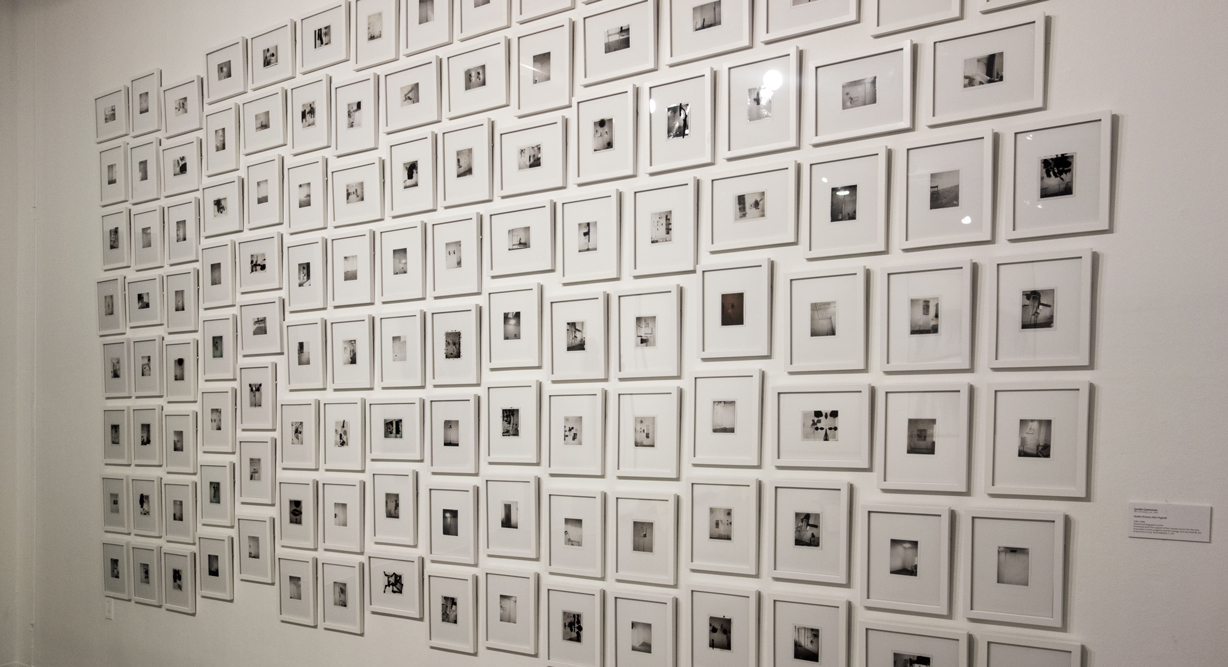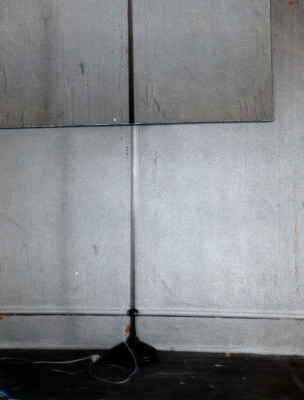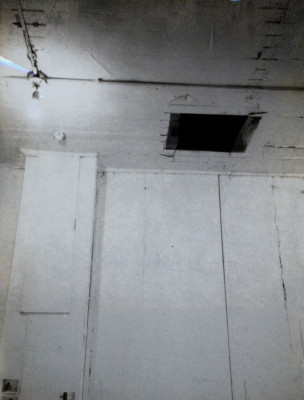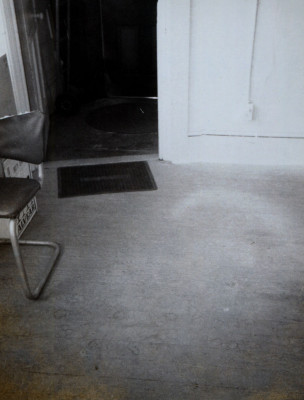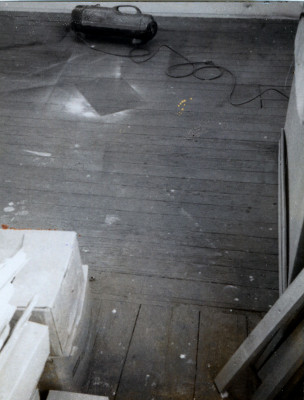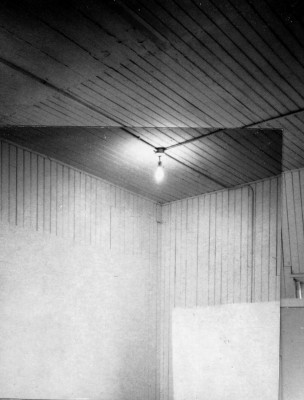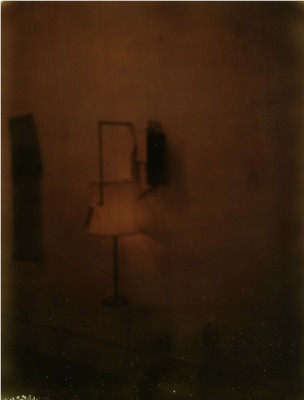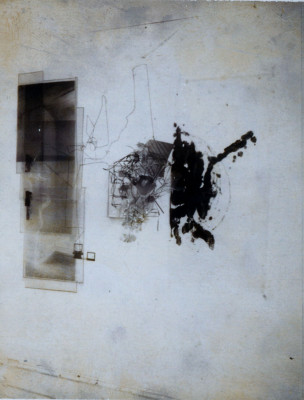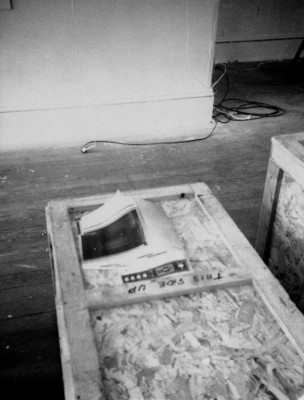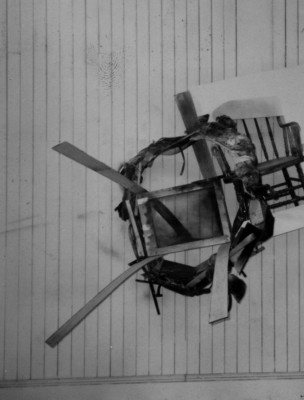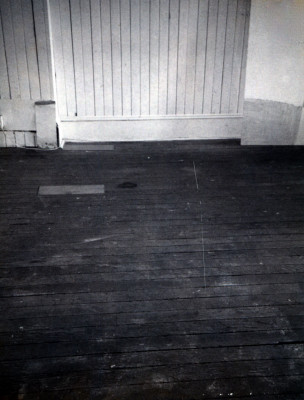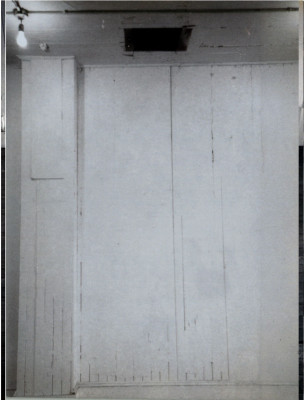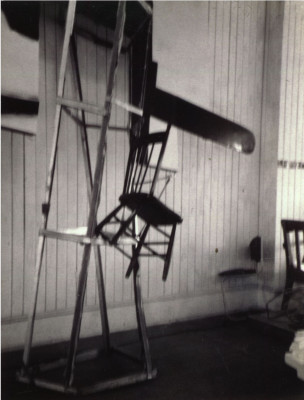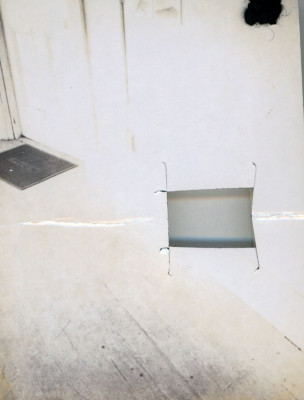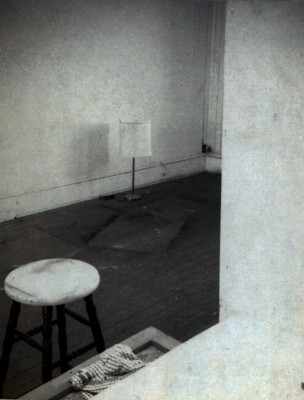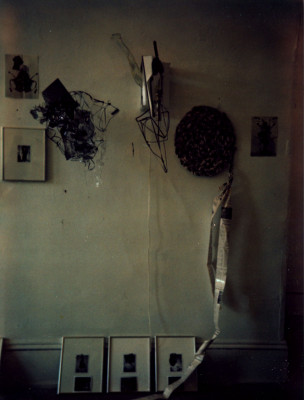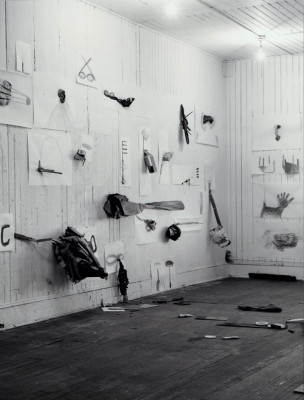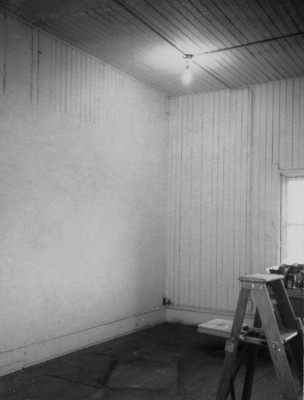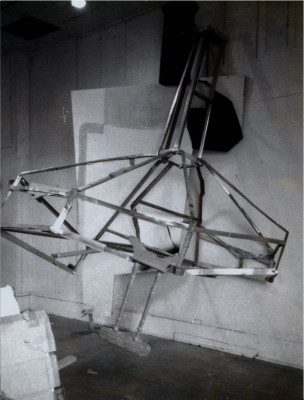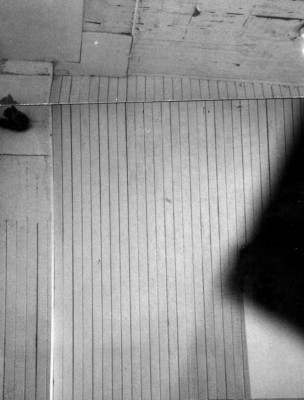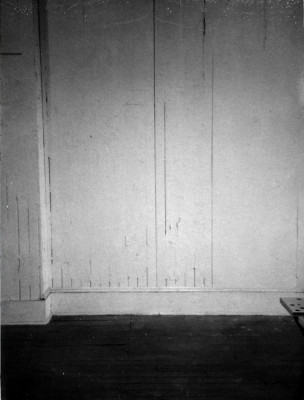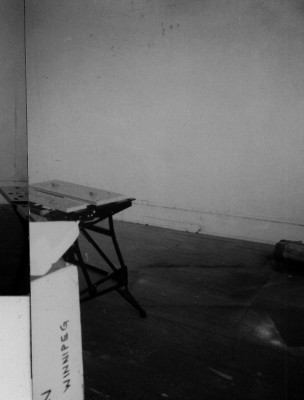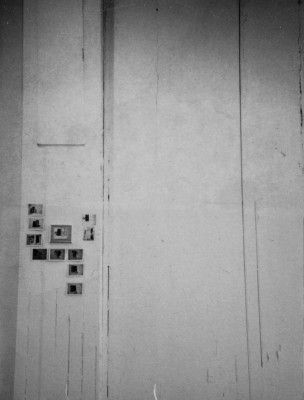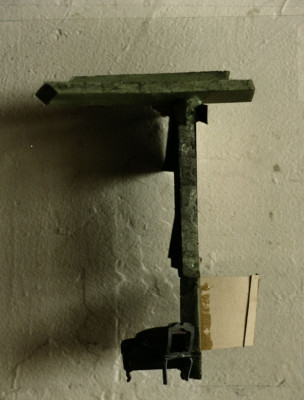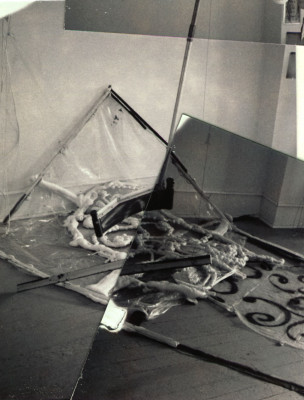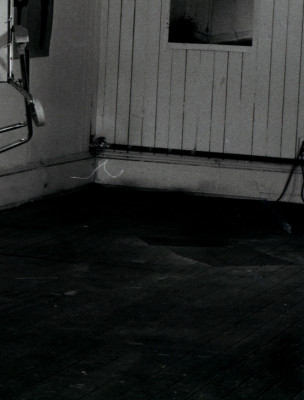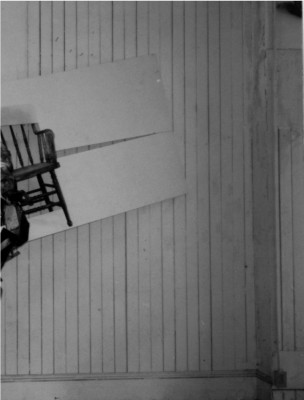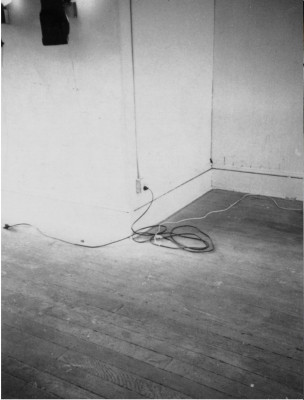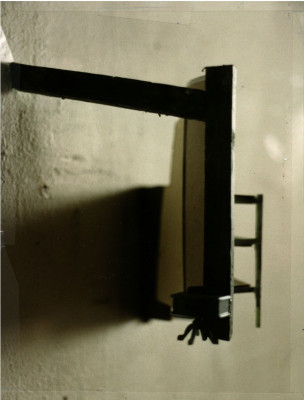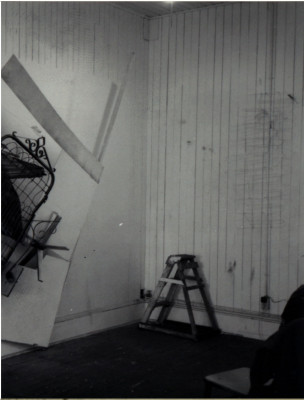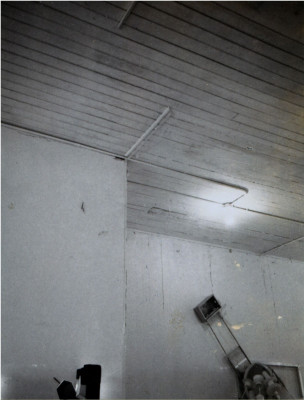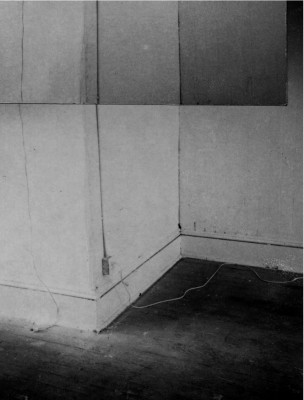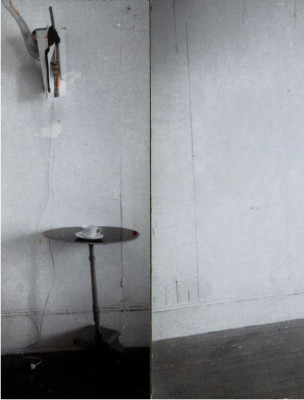STUDIO PICTURES (562 Fisgard) 1983-1989
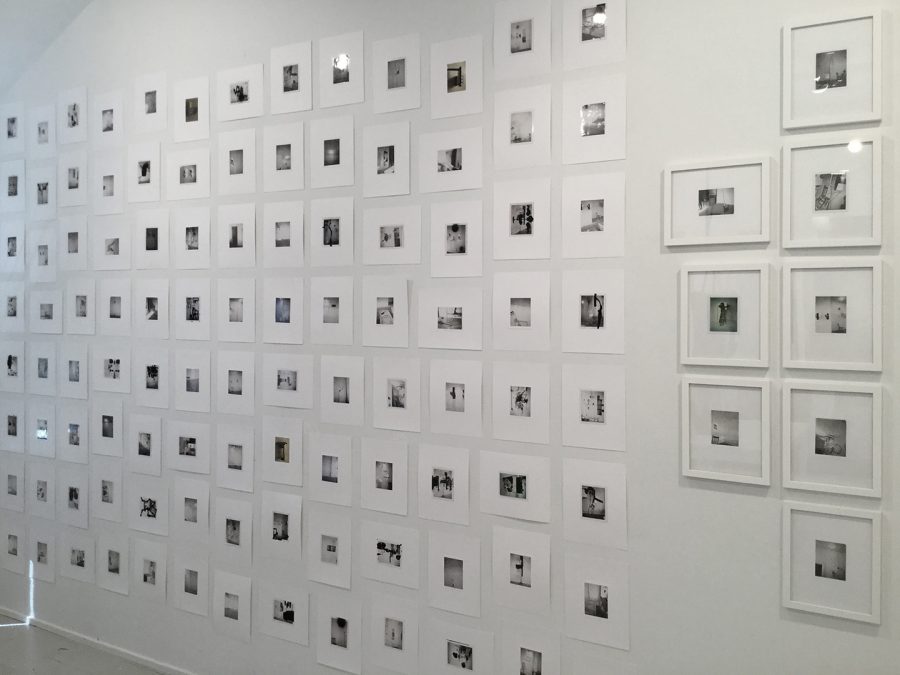
“….Gammon’s “Studio Pictures,” a crude paste-up of various images of her Victoria studio from 1985 to 1992. Gammon shifts in perspective and various piles of junk move in and out of the frame, but building features – a doorway, a window, a light switch – anchor the space as itself. It’s a nice little essay on impermanence and the passing of time, and maybe even this practice of object-making as a desperately imperfect way of marking it. But Gammon points out it’s a matter of degrees – a building’s a big object, a little more permanent, but in the grand scheme, not much. This business of being here is all about transforming, whether from quarry to skyscraper or the deliberately anti-monumental act of making cardboard, rubber and whatever else into art. But in the end, it’s all so much dust, isn’t it?” Murray Whyte, Toronto Star, 2010.
Statement regarding this series: In 1983 when I came to Victoria to teach at the University of Victoria I rented a studio space at 562 Fisgard, 3rd floor. The walls consisted of narrow vertical pine boards most of which had been covered with newspaper. I was informed that this space had been a rooming house for migrant Chinese workers, a shrine room, a school? With many gallons of paint, I made all of this white and proceeded to build work on the studio wall. However, the paint did not actually cover nor did it neutralize the architecture. The previous history seeped through and intermingled with the work I was making in a rather unsettling way. Confused and yet curious, in an attempt to understand, I photographed the small assemblage works on the wall. On reflection, in these small Polaroids, I saw the architectural space, the wall texture, the light fixtures, the baseboards as well as the sculptural assemblages that I had built. In the photographs they existed simultaneously. Unlike documentation of individual art works there was no hierarchy, here, everything was of equal significance. I was curious about the difference between encountering the assemblages in the studio versus seeing them in the photograph. When viewing the art works in the actual physical space of the studio one immediately creates a hierarchy where the art piece is clearly of the most significant order. In looking at this Studio Picture however, the art appears as just one more thing amongst many. A series of over 100 Polaroid photographs was titled Studio Picture: 1983- 1989. These photographs have been seminal to much of my practice over the years and have been used in the creation of larger photographs and assemblage works. These Polaroids (which hint at studio production) remain extant while the sculptural assemblage works at the time of photographing no longer exist. This is in keeping with my general habit of discarding work after exhibition. This curiousity, particularly regarding the relationship of the artwork to the site (and their relative hierarchies) as well as the experience of looking at an object photographed versus our experience of objects in actual space has sustained my practice…. differences between how we come to understand a thing we share space with, the physical experience of an object – versus a mediated encounter with something depicted in a photograph. In addition my interest has gravitated to ideas around the studio and studio practice, theorized extensively since the 1980’s. The studio as site of post-industrial architecture, its layered history and lack of fixed meaning, blurred boundaries between domestic and work space and aspects of gender regarding the studio have all played out in my work.
Lynda Gammon
Studio Pictures (562 Fisgard), 1983-1989
Polaroid pictures, each 3 3/8″ X 4 1/4″ framed to 8″ X 10″ (130 in series)
Purchased by the Art Gallery of Greater Victoria
